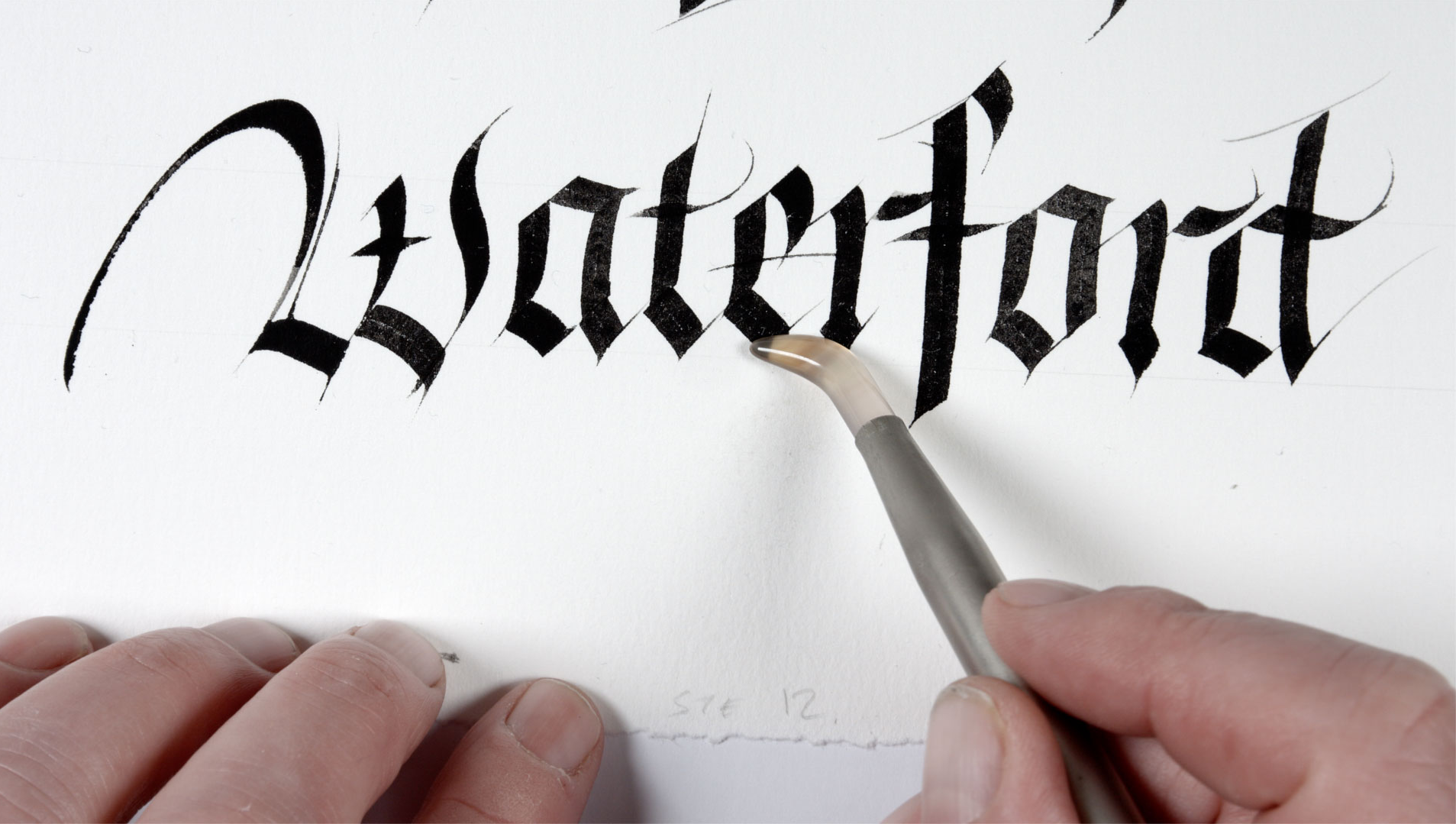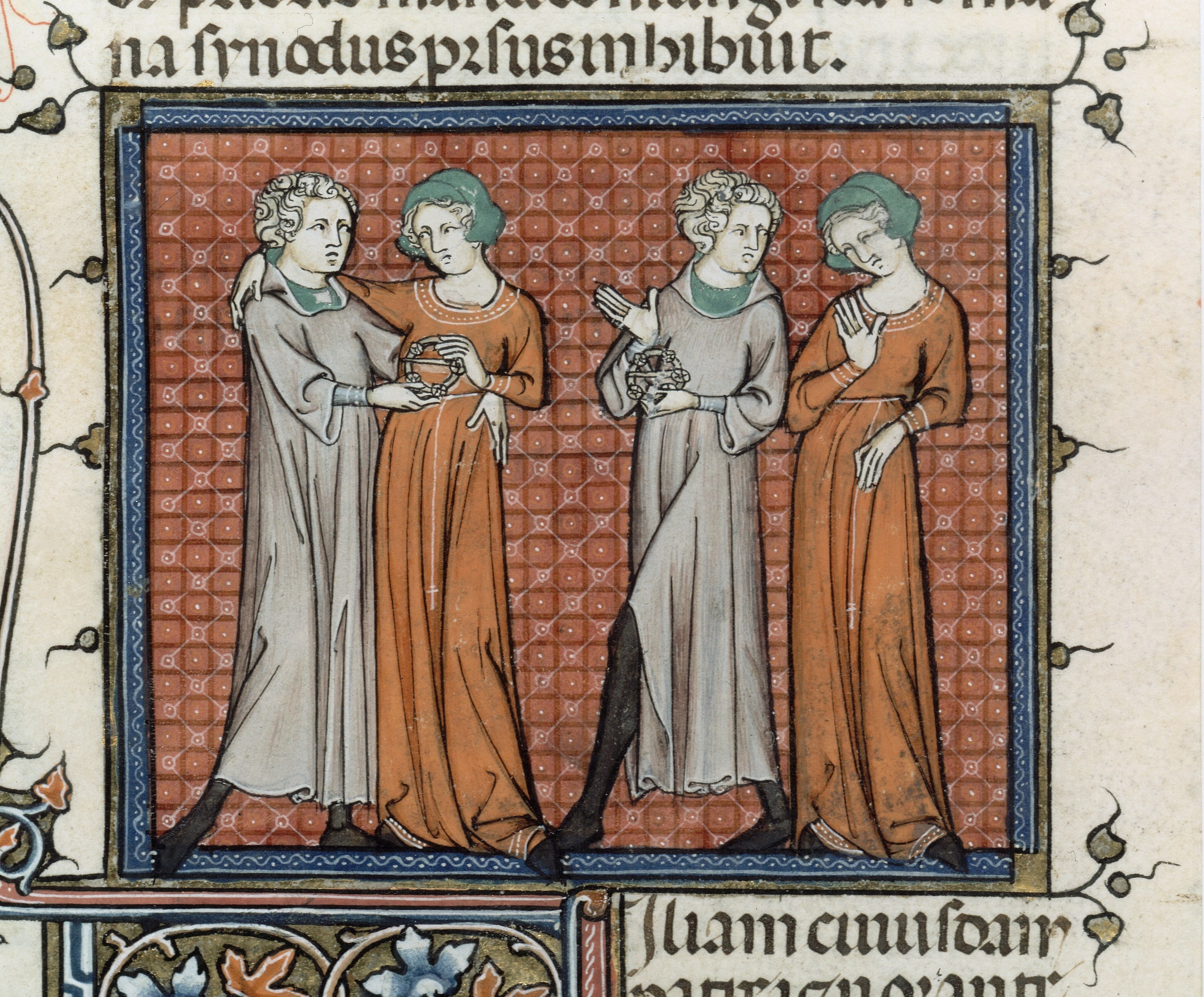
It’s fabulous Friday, so we continuing with our favourite artefacts from the Medieval Museum, today we look at the ‘Exquisite Gold Ring Brooch’ from about 1210.
Don’t forget to come and visit when we re-open on Monday 29th June.
‘To show off her neck, she closed the top of her dress with an exquisitely worked and finely made gold brooch; she placed it rather low so that an opening, one finger wide, gave a glimpse of her breasts, white as snow on the branches, this made her look even lovelier.’
When a 13th century French poet penned these lines in his famous poem The Romance of the Rose he almost certainly had in mind a brooch similar to the Waterford Ring Brooch.
This sumptuous brooch can be viewed as a symbol of Waterford’s 13th century golden age. The period of prosperity began in the decades following the Anglo-Norman invasion of 1170 when the Irish economy was
transformed by the introduction of new farming methods that produced agricultural surpluses for export.
The Anglo-Normans also introduced a new merchant class that had extensive trading connections in the Low Countries, France, England and Wales. Unlike the Celtic Tiger economy that we recently experienced, the Anglo-
Norman Tiger economy lasted not a mere ten years but instead saw a full century of growth from about 1200 up until the late 1290s. One consequence of this economic boom was the growth of towns and of a wealthy urban merchant class that had the resources to
acquire luxuries, status symbols and love tokens such as 22-carat gold ring brooches.
A rare glimpse of just how wealthy and sophisticated Waterford was in 1295 is shown by the range and quality of the goods recorded in court as stolen from a Flemish merchant chest that were stored in the house of Lawrence de Murreys in the city. Among the stolen goods were money, jewels,
gold, silver and cloth.
It was in Bakehouse Lane (connecting Peter Street to Lady Lane and bordered today on its western side by the City Library) that archaeologist Orla Scully found Waterford’s remarkable gold ring brooch between layers of ash and charcoal associated with
metalworking activity. Dating from about the year 1220 it is one of the earliest if not the earliest surviving gold ring brooch yet found in Europe.
Up until the 15th century ring brooches were one of the commonest jewels of the Middle Ages, worn and given as love tokens by both men and women. They survive in large numbers in France, England, Scotland and Ireland. The only known illustration in an Irish
manuscript of a ring brooch is to be found in Waterford’s Great Charter Roll where the governor of Ireland John Darcy (1324-1327) is shown wearing one, a 14th century Mr Darcy, surely a romantic man! It looks black today but was originally gold on the Roll.
When given to a lady a ring brooch was the medieval equivalent of the modern day engagement ring. An illustration in a 13th century French manuscript shows two possible outcomes of an exchange between a man and a woman of a somewhat exaggeratedly large ring brooch. In one sequence the man has a glum face
making it obvious that his offer of marriage has been rejected, in the second sequence the man smiles, the lady having accepted the brooch and the implied offer of marriage.
A French poem of 1184 also makes the association between the ring brooch and marriage very clear in the lines‘my bride shall wear a brooch – a witness to her modesty and a proof that hers will be a chaste bed. It will shut up her breast and thrust back any intruder.’
Just like today children in 13th century Waterford liked to mimic the jewels worn by their mothers and the archaeological excavations in the city also unearthed a number of ring brooches made of base metal that would originally have looked like
silver or gold and were possibly worn by children. These bargain basement brooches were also celebrated in a French poem where a pedlar offers women gathered around him ‘little brooches of gilt brass and of silvered latten’ (a brass alloy).
The poet goes on to explain that people were so fond of latten that sometimes it was valued as silver.
Whether the Waterford brooch was made in Waterford or was a luxury import we will never know. We do know that goldsmiths worked in the city and a man known as Roger the Goldsmith was Bailiff, a City Council official, in the 1280s. Also the mints
in the city in the 13th century would certainly have been under the management of goldsmiths. It is therefore likely that the brooch was made locally as were the four glass stones with which it is set, two blue and two green. The wearer
would very likely have believed that the stones were gemstones and in a superstitious age may also have believed that the stones had magical powers. There were many books written about the curative or talisman properties of gemstones in the Middle Ages. Whether this brooch made the wearer lucky in
love, in childbirth or warded off some evil spirits or life-threatening illness we will never know.
One thing is certain – the Waterford Ring Brooch is one of our great treasures, a link with a time of prosperity and sophistication, a time when the city’s merchant princes reaped the rewards of international trade and commerce and patron the skilled artistry of the goldsmith’s craft.



